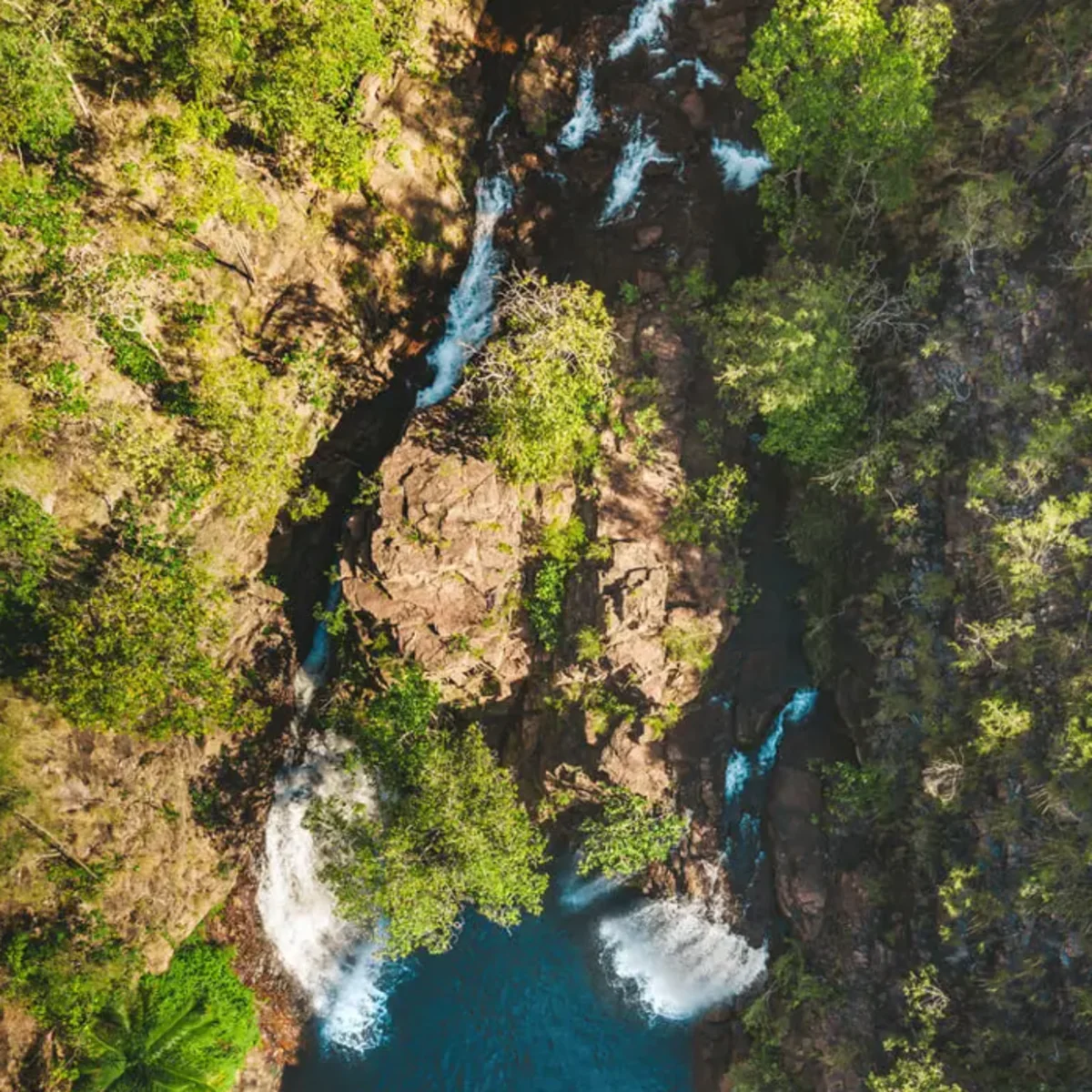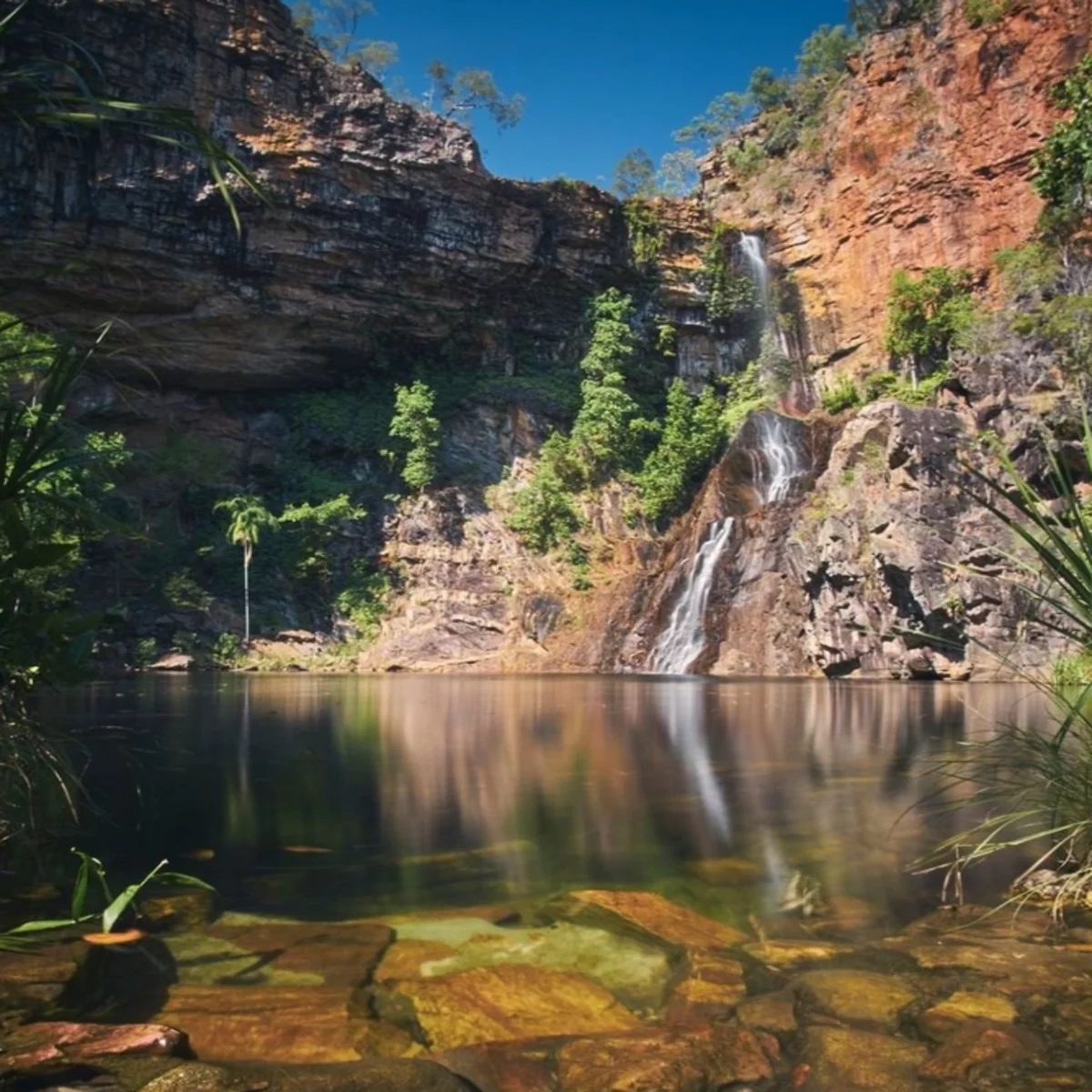What is the origin of the name Litchfield?

Litchfield was named after Fred Litchfield, who explored the region in 1865 as part of the South Australian Government's first survey expedition of the Top End. The area has been used for mining and cattle ranching for many years.
Do you know the date when the park was established?
The National Park achieved its status in 1986 and was officially declared under the Territory Parks and Wildlife Conservation Act in July 1991. It was re-declared under the same Act in 2002.
The Minister for Tourism and Culture manages Litchfield National Park, which is one of 87 parks in the NT portfolio, covering approximately 150,000 hectares out of a total of just over 5 million hectares.
The settlement history of Litchfield Park is being explored
Litchfield National Park is the central location for understanding the settlement history of the Top End. The park had significance in World War II, with various sites honouring this history. Additionally, historical buildings within the park, like Blyth Homestead, offer insight into the region's early European settlement.
Characteristics of Litchfield Park
Litchfield National Park is located in the Northern Territory of Australia and is known for its stunning waterfalls, landscapes, forests, and wildlife. It is a popular destination for tourists and locals.
Litchfield National Park is a recommended destination for those visiting Darwin, offering various camping options and tours from the city.
Exploring the indigenous features of Litchfield National Park
Litchfield National Park is the traditional land of Aboriginal Werat, Koongurrukun, Mak Mak Marranunggu, and Warray Aboriginal. The park has an ancestral history for those who have used the land for centuries.
Waterfalls
Litchfield National Park contains several notable waterfalls, such as Florence Falls, Wangi Falls, Tolmer Falls, and Buley Rockhole, each offering distinct characteristics and beauty.
Florence Falls is known for its clear waters and dramatic cliffs, making it a popular spot for swimming and snorkelling.
Wangi Falls is a popular destination for visitors, featuring a large swimming hole and an impressive waterfall.
Tolmer Falls is famous for its stunning views and popularity as a bird-watching spot. Due to these waterfalls, you have an excellent opportunity to get to know the natural wonders of the park closer.
Buley Rockhole is scenic, with multiple small waterfalls, perfect for relaxation and water massages.
Litchfield Fauna & Flora
Litchfield National Park is known for its waterfalls, and diverse flora and fauna, including unique plants and animals found only in the Northern Territory.
Visitors can observe the magnetic and cathedral termite mounds in the park and the Pandanus trees along the waterways. Wildlife, such as wallabies and possums, may be spotted while exploring. Bird watchers will find over 260 different species in the area. The park is an excellent opportunity to see Australia's iconic wildlife.
Crocodiles
Crocodiles are present in Litchfield National Park. While there is never a guarantee that any area in the Northern Territory is utterly safe from crocodiles, it should not deter you from visiting. During the dry season from May to October, popular areas are typically cleared of saltwater crocs, which are the most dangerous to humans. Always check swimming information signs and avoid swimming in prohibited areas.
In Litchfield National Park, freshwater crocodiles may be present near water sources during the dry season. While swimming is generally safe as they primarily feed on fish, it is important not to approach or provoke them.

During the wet season (from November to April), popular swimming spots may be closed due to flooding, potentially allowing saltwater crocodiles to enter. It's important to know this if you plan to visit during this time.
Exploring Litchfield
If you prefer a slower pace, there are other ways to explore the park. You can drive along the main road, stopping at lookout points. You can also join the Litchfield National Park Tour from Darwin. These tours cover all the highlights of the park and provide insight into the history and culture of this area. Tours from Darwin vary in length, from half-day trips to multi-day adventures.